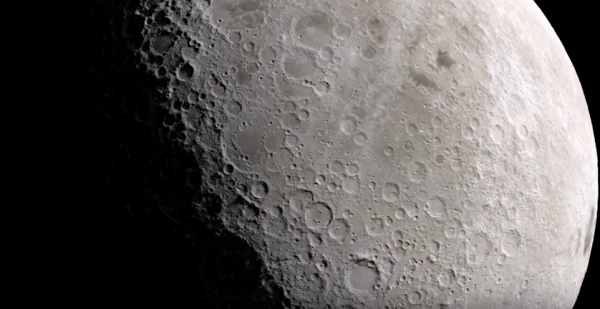By Staff Reporter, | January 10, 2017

Scientists have known about levitating particles on the Moon for the past five decades ever since NASA's 1960's Surveyor probes. (YouTube)
Solar activities such as coronal ejections or flares blast highly energetic particles into space. With no atmosphere, the Moon's surface is subjected to the harsh space environment. Luckily, Earth has atmosphere shielding from such radiations.
According to the Deccan Chronicle, in 2008, the Soil Science Society of America explained that the formation of powdery dirt on the lunar surface was due to the impact of micrometeorite on the Moon rocks. The pounding on the Moon rocks creates the fine particles.
Like Us on Facebook
Now, researchers at NASA have discovered why dust particles on Moon are at floating above the surface, despite having no flowing water or wind to aid their movement, according to Science Alert. The discovery can also help in analyzing the processes that occur in various airless environments such as in space and rings of Saturn.
Scientists have known about levitating particles on the Moon for the past five decades ever since NASA's 1960's Surveyor probes.
Xu Wang from NASA Ames Research Centre in California and his team carried out a lab experiment to observe the behavior of micron-sized particles when exposed to electrically-charged gasses or ultraviolet radiation. The particles would leap several centimeters above the surface, and light seems to have scattered through the particles to create a horizon glow, similar to horizon glow of Moon.
The study also shed light on the strange properties of the dust found on the Moon when impacted by Sun plasma or ultraviolet radiation, which can raise the particles up above the surface. This is due to emission and re-absorption of the electrons between the neighboring particles. This could lead to large, intense repulsive forces or electrical charges.
The study also highlighted that powerful solar storms are capable of charging up the Moon surface and can produce sparks which can vaporize as well met the lunar soil. This is especially true in the permanently shadowed regions of the Moon.
The phenomenon which occurs in Moon can occur in any airless environment. The study from NASA has been released in Geophysical Research Letters.
-
Use of Coronavirus Pandemic Drones Raises Privacy Concerns: Drones Spread Fear, Local Officials Say

-
Coronavirus Hampers The Delivery Of Lockheed Martin F-35 Stealth Fighters For 2020

-
Instagram Speeds Up Plans to Add Account Memorialization Feature Due to COVID-19 Deaths

-
NASA: Perseverance Plans to Bring 'Mars Rock' to Earth in 2031

-
600 Dead And 3,000 In The Hospital as Iranians Believed Drinking High-Concentrations of Alcohol Can Cure The Coronavirus

-
600 Dead And 3,000 In The Hospital as Iranians Believed Drinking High-Concentrations of Alcohol Can Cure The Coronavirus

-
COVID-19: Doctors, Nurses Use Virtual Reality to Learn New Skills in Treating Coronavirus Patients







